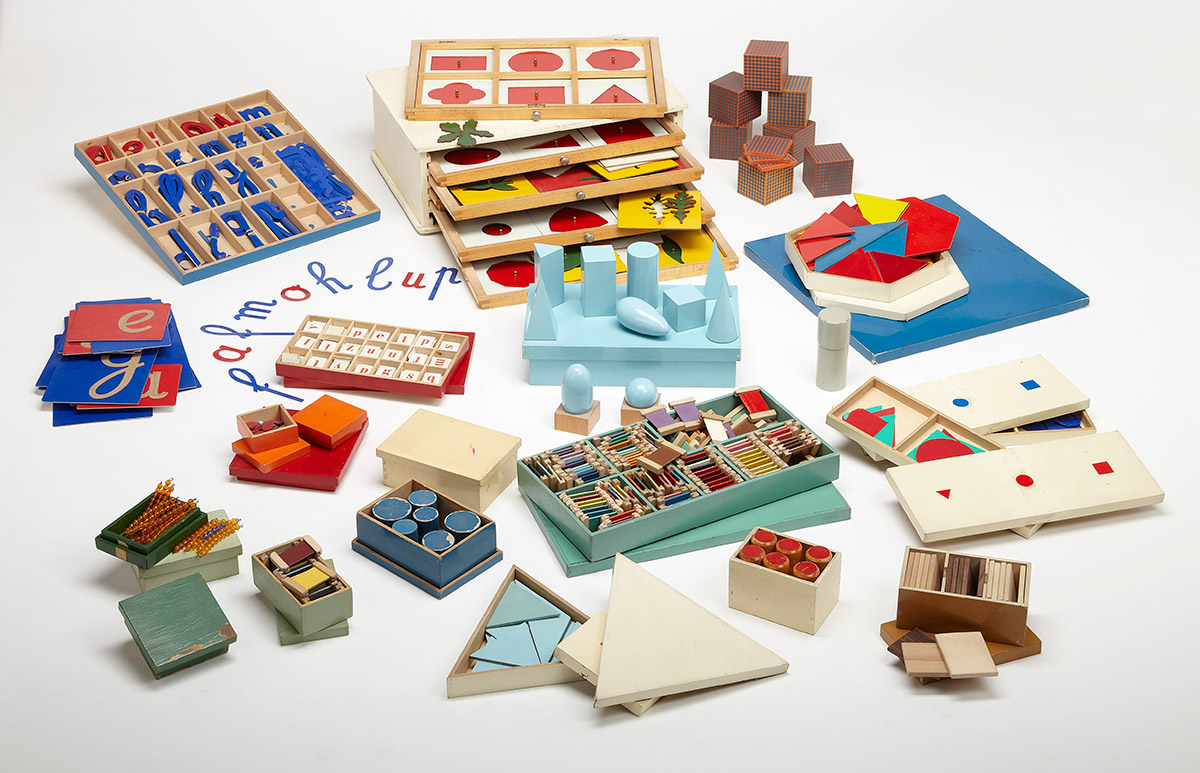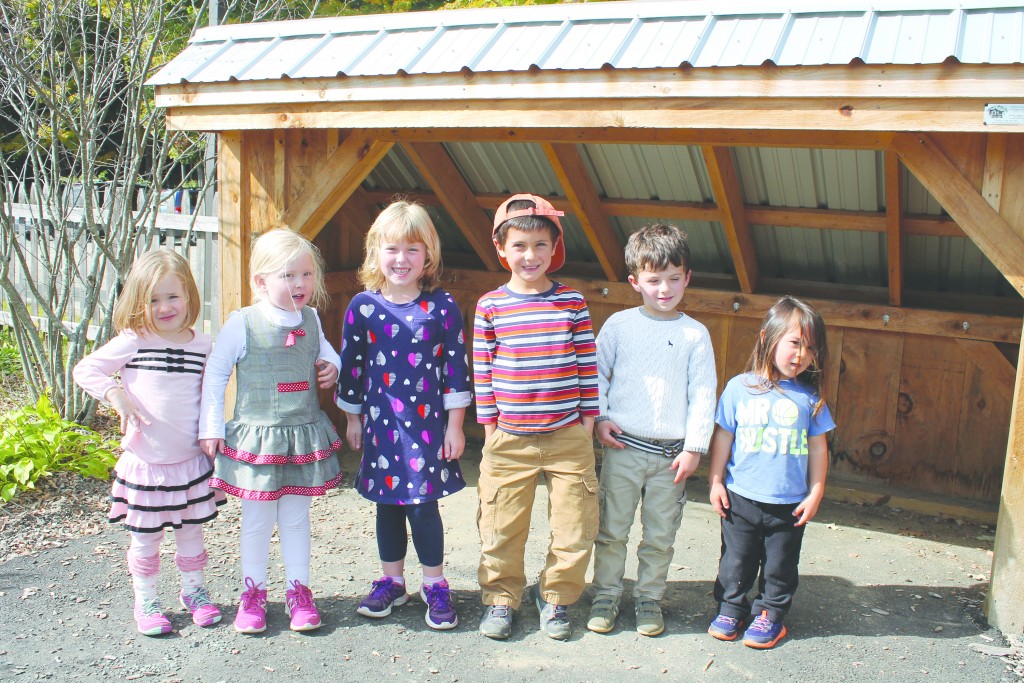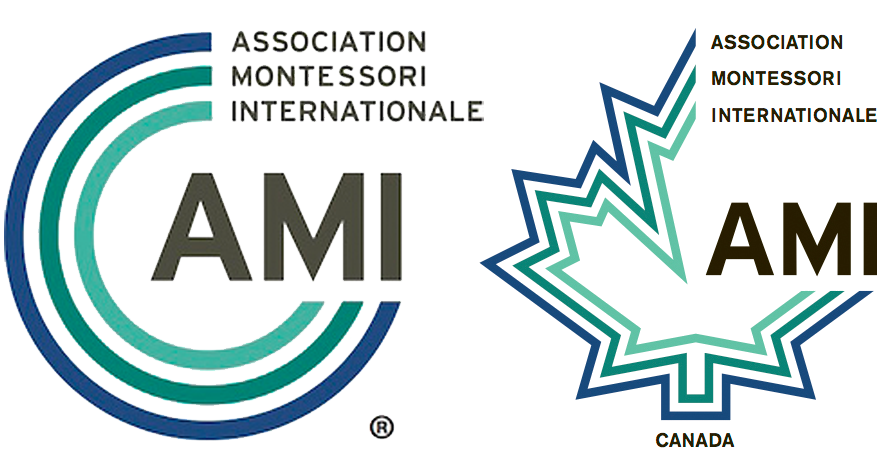Montessori classes thrive when the number of children in the class is substantial. The Montessori model of education is not like the traditional one, where children are grouped by age, the teacher is the focus of the class and the method of instruction is from teacher to children. In the Montessori model, the teacher presents new concepts and materials to individual children or small groups. Children pursue their own work independently or in a small group to practise concepts or to repeat activities shown in order to acquire mastery. The teacher moves throughout the classroom environment giving lessons, offering assistance, and directing children as needed. This creates a dynamic learning environment in which children see many different activities underway throughout the day. This dynamic often spurs children to choose activities or gives them ideas for their own work.
(Maria Montessori, The Child, Society and the World)
Mixed age groupings and class sizes are interrelated. For example, in a class of 3, 4 and 5 year olds there are three different age groupings. When the class size is small, the number in each cohort is also small. So, in a class of 24 children, there will be approximately 8 children in each age group. As the class size increases, the number of activities to observe, the number of potential workmates and peers of one's own age increases. Children collaborate and help each other in this sort of environment, so, when the overall class size is large, it increases the number of social contacts and experiences a child may have.
(Maria Montessori, The Absorbent Mind
Physical, social and intellectual independence are all supported by larger class sizes. Children try to do things themselves and to figure things out when they are given the opportunity to do so. Children will help each other or are encouraged to try on their own when the adult is engaged in giving lessons to others. This supports the growth of independence, self-confidence and a feeling of competence.
The Teacher and the Assistant
The teacher's primary role is to connect the children with activities in the classroom, so that they can then pursue their own learning. While she remains aware of all of the children in the class and their activities, she moves about offering lessons to individuals or small groups and allows the children time to repeat and practise. Once she awakens the interest, the children are keen to use the material and to explore because
(E.M. Standing, Maria Montessori: Her Life and Work)
The art of being a Montessori teacher is in knowing how much help to give, when to offer it and when to wait. Unnecessary help is a hindrance to the development of the child.
(E.M. Standing, Maria Montessori: Her Life and Work)

Offering help for something a child can do independently weakens the child, because he begins to believe that he must rely on the adult for things he could otherwise do himself. When children seek help from other children, this allows the child who is helping to reinforce the knowledge he has and it can be the case that a child can learn certain tasks better from a slightly older child than he can from an adult.
The assistant plays a crucial role in the Montessori environment. One AMI teacher and one non-teaching assistant works very well for a group of 28-35 children at both the Casa (3-6 years) and Elementary (6-9, 9-12 or 6-12 years) levels. In the Infant Community, there will be one AMI teacher and one assistant for 12 children. As the number of adults increase, the independence of the children can lessen and there can be more instances of unnecessary help. The assistant watches the entire group and offers assistance when a child requires individual help or in certain social situations when a group of children require an adult to help them sort themselves out. Her role as an observer is of great support to the teacher and allows the teacher to fulfill her primary role of presenting lessons and engaging children in purposeful activities.
Materials

The class must be equipped with a full set of Montessori materials as given in the teacher's AMI training. This implies that all of the material necessary for the full physical, intellectual, social and creative growth of the child will be available at all times. At the Casa level, there may be extraneous activities or toys in a child's first weeks in the class, when a few puzzles or familiar activities serve to facilitate his transition to a new environment.
Materials must be in excellent repair and must be accessible to the children. When they are beautifully maintained and complete, they attract the child and allow him to work fully. "All the apparatus must be meticulously in order, beautiful and shiny, in perfect condition. Nothing must be missing, so that to the child it always seems new, complete and ready for use." (Maria Montessori, The Child, Society and the World) In a Montessori classroom, the materials are teachers, too. The materials represent concepts and it is through the child's exploration with the material, that he develops understanding and abstraction of these concepts. Many of the materials contain a "control of error" which acts as a guide and allows the child to self-correct as he works.

With the full range of material present for a multi-aged group of children, a younger child can look ahead and see what older children are working with, creating a feeling of anticipation that he will one day work with those materials, too. It allows the older child to look around and feel a sense of confidence as he realizes all of the activities he has mastered. There is only one set of material for each activity.
If there is only one set of material for each activity and if it is in use, the child must make a choice. He may wait, he may choose to observe or he may choose another activity. Learning how to wait and how to take turns is an important social skill that is needed every day in our society. When a child chooses to wait, he is developing self-control or self-discipline by suspending his own desire at that moment in time.
(Maria Montessori, The Child, Society and the World)
Program
Order, consistency and routine are very important to the young child. When they exist in his environment, he feels a sense of predictability and therefore, security; he knows what will happen and when. Ongoing daily attendance gives the child a sense of routine to his day and his life. At the 3-6 year age group this entails attendance in the program 5 days per week and at the 0-3 year age group, attendance is a minimum of 4 consecutive days per week.
The child stays in the same class, with the same teacher for a complete cycle of learning. At the Casa level this will be from ages 3-6 years. At the Elementary level this will be either from 6-9 years, 9-12 years or 6-12 years. This allows the teacher to get to know the child very well and to support his growth and development over time. It gives the child time to repeat, explore and master concepts, time to delve deeply into topics that interest him and time to mature and grow. The learning experiences change over the course of the three years with later activities building on skills and concepts acquired earlier.
Socially, the child is part of a community of children that comes together as a cohesive group over the span of several years. The child first has the experience of being a younger child who has much to learn and who may seek help from older children. As the child grows in experience, the roles change and he becomes the one helping others. In the final year of the cycle, the child is a role model and a mentor to other children. This role helps the child confirm all he knows by showing and helping others and affirms his self-confidence and self-esteem. When a child enters the class part way into a cycle or leaves before it is completed, the intellectual and social experience can be lessened.
Uninterrupted Work Cycle
The notion of the three hour uninterrupted work cycle was documented by Maria Montessori, after observing individual children and groups of children. This was the case with her discoveries of the children's developmental nature; she did not begin with presumptions, but instead observed, documented and proposed ideas based on this scientific method. After charting many work cycles of individual children and groups of children, she proposed the following graph of a three-hour work cycle as being typical:

(Work Cycle, Advanced Montessori Method, Volume 1)
In the example of the chart, children arrive at 9:00 am and begin quite gradually, first choosing familiar activities. At first the activities are simple and the child usually stays with them a short time.
(Maria Montessori, The Advanced Montessori Method, Volume 1)
After this initial period, there is a phase of unrest or "fatigue" when the children may wander and appear restless. After a short period of unsettledness, the children resume their work and choose more challenging tasks and stay with those tasks for longer periods. Towards the end of the three hours, the children wind down and emerge from their activity appearing calm, refreshed and fulfilled.
(Maria Montessori, The Advanced Montessori Method, Volume 1)
When children are given the opportunity to engage in self-directed, purposeful activity for long periods of time, it greatly enhances the development of concentration. When they are interrupted or only allowed short work periods, they tend not to choose long, challenging tasks which they learn cannot be completed, but instead they move from one simple task to another, thus never reaching these periods of long intense concentration.
(Maria Montessori, What you Should Know About Your Child)
Mixed Age Groups

Montessori classrooms are made up of mixed age groupings. This principle is one factor leading to a different social dynamic than one might find in traditional classroom settings where children are grouped by grade or age group. In the Montessori classroom there is a great range in the social, intellectual and learning needs amongst the group of children. In the traditional setting the children have similar needs at the same time and often, are all expected to be learning the same content. This apparent similarity between the children can create competition to see who can complete the task fastest or who makes the fewest mistakes. In the Montessori classroom, there is a great variety and range of work going on simultaneously by different children at different ages.
The younger children often watch the older children at work. They see the progression in learning as natural and look forward to being shown more complex and challenging tasks just as they have seen the older children doing.

(Maria Montessori, Education for Human Development)
In the words of Dr. Montessori,
(Maria Montessori, The Absorbent Mind)
The mixed ages enhance the social life of the class and enrich the child's social experience. Children are free to relate with anyone in the group.
The range in ages also contributes to the smooth functioning of the class. Not all children have the same needs at the same time. For example, when dressing to go home, some children can assist others to zip zipper or tie shoes. The teacher is not needed to help everyone at the same time, whereas in a group of four-year olds, all might need help tying shoes.
(Maria Montessori, The Absorbent Mind)
The older children can often be observed showing younger children how to work with materials, how to clean up or how to put things away. This spontaneous mentoring is beneficial to both the child who is offering assistance and to the one who is being shown. The older child reinforces concepts and skills when he shows them to another. He can explain to a younger child in a way that the younger child understands because he is closer in age and experience. The younger child readily accepts help from the older child without feeling the loss of independence that he might feel by being assisted by an adult.
(Maria Montessori, The Absorbent Mind)
Dr. Adele Diamond, of the University of British Columbia reports that studies show
(Talk given at Virginia Tech Carilion Research Institute on December 1, 2011)
The dynamic created by the mixed ages creates a social community within the class. Children care for each other, help each other, learn from each other, accept each other and grow together.

